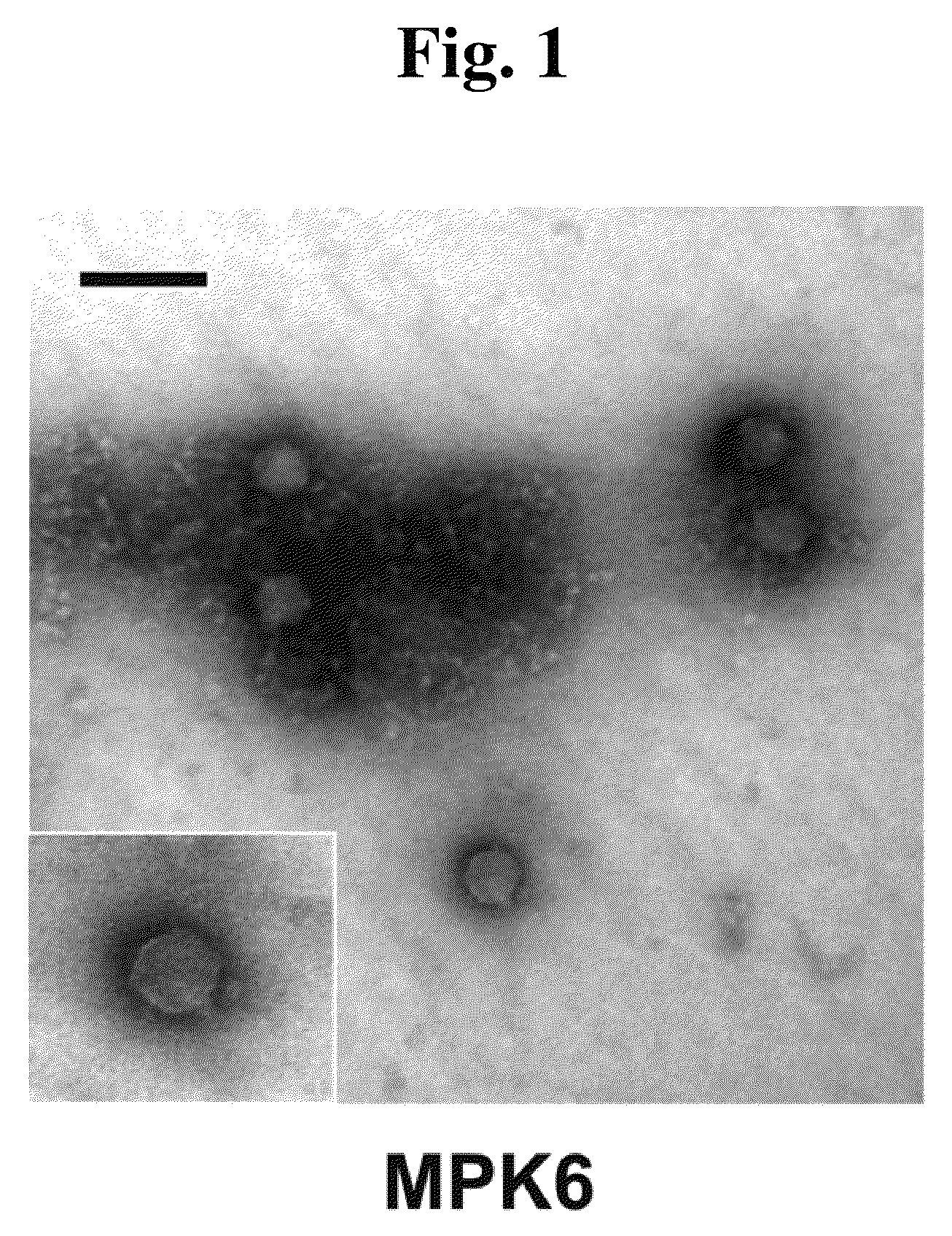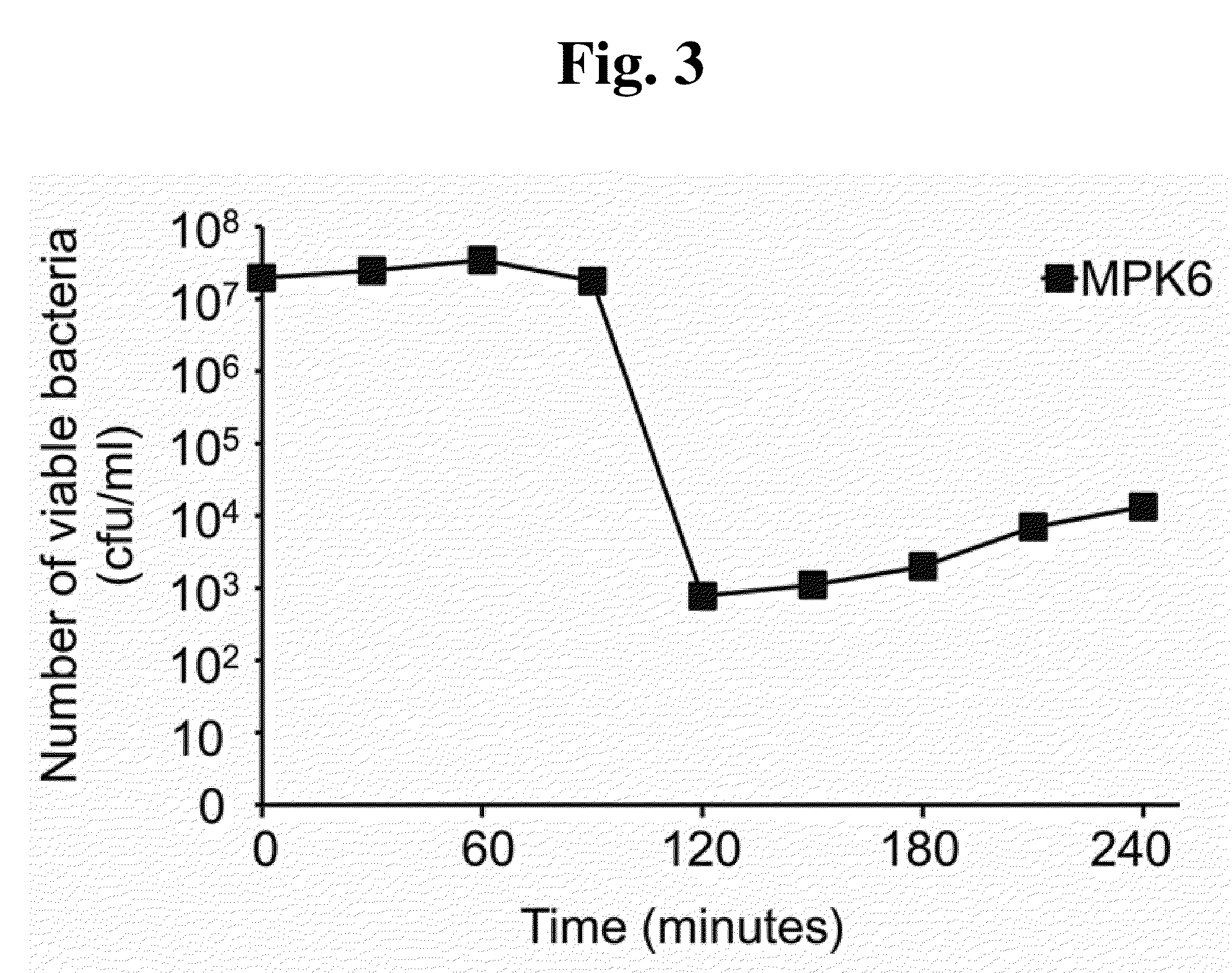Phage therapy against Pseudomonas aeruginosa
a technology of phages and aeruginosa, applied in the field of phage therapy, can solve the problems of adversely affecting pulmonary function and more often ineffective
- Summary
- Abstract
- Description
- Claims
- Application Information
AI Technical Summary
Benefits of technology
Problems solved by technology
Method used
Image
Examples
examples
Experimental Materials and Methods
Bacterial Strains and Culture Conditions
[0059]Pseudomonas aeruginosa strain PAO1 was used as described elsewhere (12). The lipopolysaccharide mutants (rmd, wbpM, and rmlC) are gifted from Dr. Joe Lam (University of Guelph, Canada). Bacterial cells were grown in Luria-Bertani (LB; 1% triptone, 0.5% yeast extract and 1% NaCl) broth with aeration or 2% Bacto-agar (Difco) LB or cetrimide agar (Pseudomonas isolation agar, Fluka) plates at 37° C.
Preparation of Phage Lysates
[0060]Phage strains MPK1 and MPK6 are enriched by plate lysate method using P. aeruginosa strain PAO1 as the host as described elsewhere (13). The culture suspension was centrifuged at 8,000×g for 10 min at 4° C. to remove the cell debris, and the phage particles were precipitated from culture supernatant in the presence of 10% polyethylene glycol (average molecular weight, 8,000) and 1 M NaCl, and then dissolved in 5 ml phage buffer [10 mM MgSO4, 10 mM Tris (pH 7.6), and 1 mM EDTA]. Ph...
PUM
| Property | Measurement | Unit |
|---|---|---|
| pH | aaaaa | aaaaa |
| pH | aaaaa | aaaaa |
| diameter | aaaaa | aaaaa |
Abstract
Description
Claims
Application Information
 Login to View More
Login to View More - R&D
- Intellectual Property
- Life Sciences
- Materials
- Tech Scout
- Unparalleled Data Quality
- Higher Quality Content
- 60% Fewer Hallucinations
Browse by: Latest US Patents, China's latest patents, Technical Efficacy Thesaurus, Application Domain, Technology Topic, Popular Technical Reports.
© 2025 PatSnap. All rights reserved.Legal|Privacy policy|Modern Slavery Act Transparency Statement|Sitemap|About US| Contact US: help@patsnap.com



